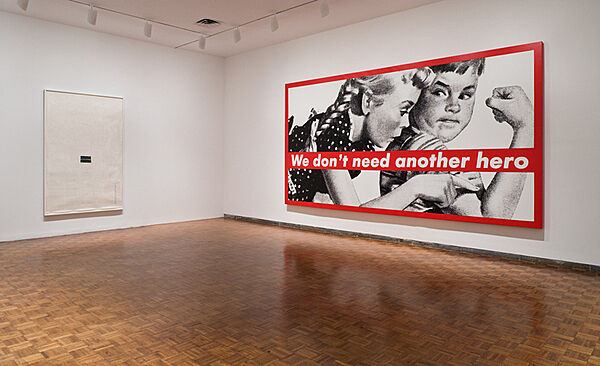Paul Sietsema
1968–
Paul Sietsema’s body of work encompasses drawing, sculpture, and film and explores the nature of representation itself. Conceptual yet deeply engaged with material, Sietsema’s projects often involve the meticulous crafting of objects or models that are then represented in projected films. For his film Empire, Sietsema built architectural models, including one of the living room of the art critic Clement Greenberg—known for his formalist approach to art and emphasis on the purity of mediums—as it appeared in a 1964 Vogue photo spread. The strict adherence to prescribed forms embodied by the art hanging in Greenberg’s living room is juxtaposed with the gilded pomp and decorum of the other model Sietsema built, of an eighteenth-century Rococo royal salon. Sietsema creates an entire landscape of books, images, histories, and bodies of knowledge for these two spaces and then combines and weaves them into a structure that becomes both the material and subject of the film.
Questions about the mediation of material, information, and their cultural context play a central role in Sietsema’s artistic practice. In Empire such questions are mirrored in the spatial uncertainties the artist creates for the viewer through his skillful play with scale. Using black- and-white and red-tinted negative images, Empire creates a network of references and allusions that explore systems of power and visual styles. The 1964 image, for example, which evokes Greenberg’s art-historical reign, was shot the same year as Andy Warhol’s iconic eight-hour film Empire, while the making of Sietsema’s film coincides with Michael Hardt and Antonio Negri’s influential 2000 theoretical book Empire, which investigated new forms of imperialism.
Introduction
Paul Sietsema (born 1968) is a Los Angeles–based American artist who works primarily in film, painting and drawing. His work addresses the production, consumption, and proliferation of cultural objects, reflecting his interest in the possibility of an artwork to mediate information or meaning in a way that engages with the aesthetics of a specific time period. In the words of Sarah Robayo Sheridan, “Paul Sietsema compounds organic and artificial detritus in all his artwork, scavenging in history’s wake to identify specific tools of cultural production and foraging for concepts of art promulgated in the words of artists and attitudes of critics. He mines film as a vestige, the medium of the mechanical age, pressing and squeezing its very obsolescence through a contemporary sieve. In so doing, the artist hovers in the switchover between a bodily inscription in the image and a fundamental reconstitution of sight and representation in the matrix of the virtual. Where body stops and image starts is a divide collapsing through a series of innovations and accidents that go back as far as the people of Pompeii trapped in an emulsion that marked their death, but which paradoxically carried forward their image into eternity.”
Wikidata identifier
Q7153600
Information from Wikipedia, made available under the Creative Commons Attribution-ShareAlike License . Accessed December 19, 2025.
Country of birth
United States
Roles
Artist, graphic artist, photographer, sculptor, video artist
ULAN identifier
500355781
Information from the Getty Research Institute's Union List of Artist Names ® (ULAN), made available under the ODC Attribution License. Accessed December 19, 2025.


